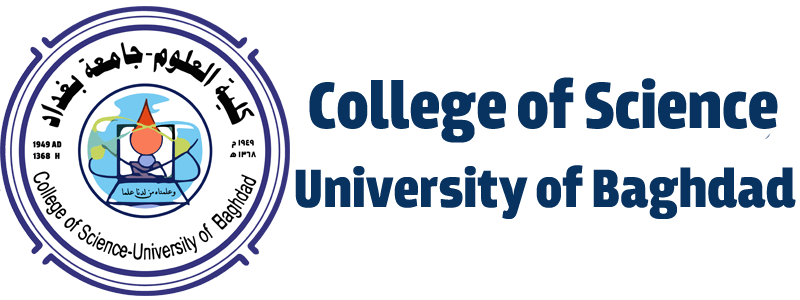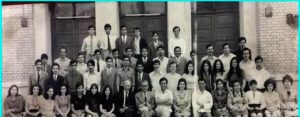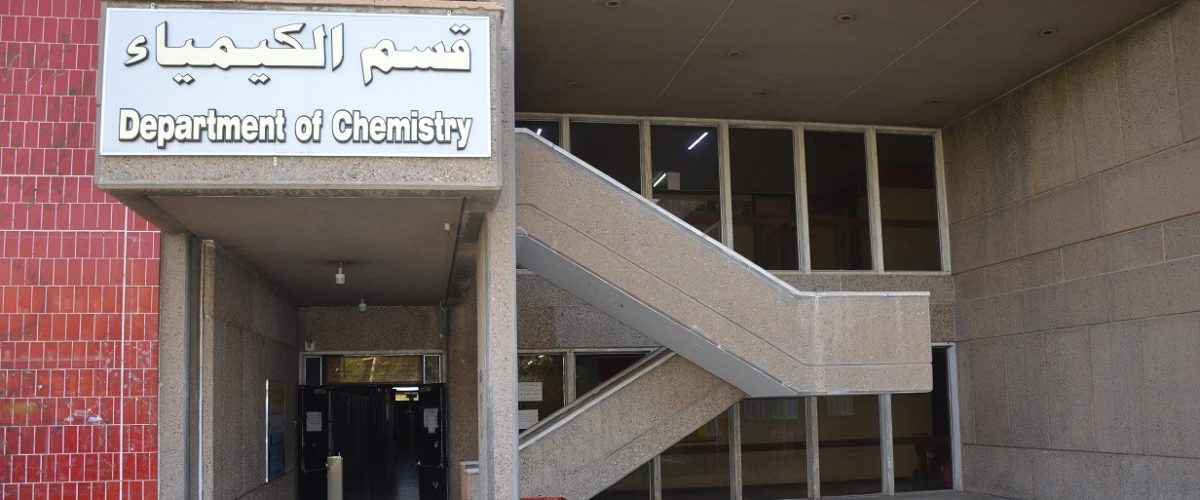

Advanced research projects have been approved that include the various specializations of chemistry, such as organic, inorganic, analytical, physical, biological, and industrial, some of which have a great relationship with the medical, pharmaceutical, and industrial materials that the country needs at the present time. In order to sustain postgraduate studies, the department established a central laboratory that includes advanced research equipment and an efficient staff to complete various analyzes for postgraduate students and other relevant institutions.
A brief historical overview of the Chemistry Department
The College of Science was founded in 1949 and was then called the College of Arts and Sciences, and its dean is Professor Dr. Abdul Aziz Al-Douri. At that time, the College of Science included two departments: Natural Sciences, in which chemistry, animals, and plants were taught. The other department was known as Physics and Mathematics. In the year 1953, the College of Science separated from the College of Arts and moved from its location in Bab al-Muadham to its location in Adhamiya (which is the front part of the current Ibn al-Haytham College of Education). It occupied a small building with rooms of two types, large and other small, but it lacked laboratories, so students would go to laboratories. The College of Engineering, the College of Medicine, and the High Teachers College to conduct experiments in chemistry, physics, animals, and plants within the practical part of their curriculum. The head of the department at that time was Professor Wadih Fathallah. As for the faculty members, they are Dr. Rasul Kamal Al-Din and his professors from various foreign countries such as Britain, America, the Netherlands, and from the Arab countries Egypt and Jordan, all of whom have the rank of professor.
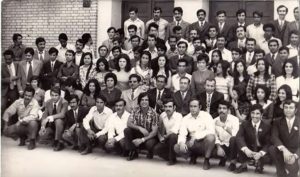
In the year 1953, the number of students in the third session of the College of Science/Physics Branch was 25 students, and the Chemistry Department had 10 students. The teachings in it from the first stage to the third stage included various topics such as mathematics of all kinds and physics (nuclear and photonics). As for the fourth stage, the topics taught were: Pure chemistry. In 1958, a group of Iraqi envoys holding doctorates from developed countries began arriving at the college, including the Chemistry Department, to be a new nucleus for faculty members. These groups carried the latest scientific developments in chemistry, including Professor Dr. Albertine Habboush, Dr. Fadel Al-Taie, and Dr. Sabri. Farouha, Dr. Anwar Kiso, Dr. Abdul Redha Al-Salhi, and Dr. Ghazi Darwish.
 In the year 1970, the chemistry departments in the College of Agriculture, Education, and Science united, so that the University of Baghdad had one department for chemistry, which was located in the College of Science. Then, after a few years, the chemistry departments separated again. At the beginning of the establishment of the Chemistry Department at Al-Mustansiriya University, the Chemistry Department at the College of Science/University of Baghdad allowed their students to work in the department, take theoretical lectures, and complete the practical part. This continued for a period of years until the current Al-Mustansiriya University building was completed. He supervised the establishment of the Chemistry Department at Al-Mustansiriya University. Professors from the Department of Chemistry at the College of Science/University of Baghdad, such as Professor Dr. Sobhi Al-Azzawi, Professor Dr. Fouad Qanbour, and Professor Dr. Abdul Latif Al-Jubouri, in addition to a cadre of teaching assistants and employees in the warehouse of the Chemistry Department.
In the year 1970, the chemistry departments in the College of Agriculture, Education, and Science united, so that the University of Baghdad had one department for chemistry, which was located in the College of Science. Then, after a few years, the chemistry departments separated again. At the beginning of the establishment of the Chemistry Department at Al-Mustansiriya University, the Chemistry Department at the College of Science/University of Baghdad allowed their students to work in the department, take theoretical lectures, and complete the practical part. This continued for a period of years until the current Al-Mustansiriya University building was completed. He supervised the establishment of the Chemistry Department at Al-Mustansiriya University. Professors from the Department of Chemistry at the College of Science/University of Baghdad, such as Professor Dr. Sobhi Al-Azzawi, Professor Dr. Fouad Qanbour, and Professor Dr. Abdul Latif Al-Jubouri, in addition to a cadre of teaching assistants and employees in the warehouse of the Chemistry Department.
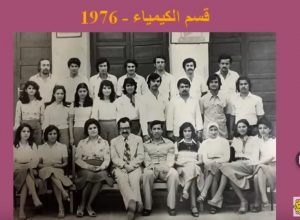 In the year 1962, the Department of Chemistry began to open a master’s degree. The first session graduated in 1965, all of whom were graduates of the Department of Chemistry (Bachelor’s degrees). Their number was seven students in the specializations of organic chemistry, physical chemistry, and analytical chemistry. They were Hamza Abdul Hussein, Farouk Al-Najjar, Khaled Sultan, Jassim Ali, and Amer Al-Ani. Salwa Youssef Rafo Qazanji and Salwa Serop Kandarian, most of whom were appointed to the department as assistant teachers and then completed their doctoral studies in the United Kingdom. In the year 1972, the Department of Chemistry began to open a doctoral study, and there was an excellent group of qualified teachers to teach and supervise doctoral students, namely Professor Dr. Sami Al-Mudhaffar, Professor Dr. Fouad Qanbour, Professor Dr. Basil Al-Sadr, Professor Dr. Jalal Muhammad Saleh, Professor Dr. Muthanna Shanshal, and Professor Dr. Thanoun Muhammad Aziz. And Professor Dr. Fahd Hussein. The department at that time had workshops necessary to maintain, sustain, and produce the educational and research equipment it needed, as it contained two large warehouses for equipment and chemicals, a carpentry workshop, another for electricals, a third for blacksmithing and mechanics, and devices for generating liquid nitrogen gas. The department at that time contained service laboratories containing the latest equipment necessary to conduct spectroscopic and electrical analyzes (modern devices for infrared and ultraviolet spectroscopic measurements), electrochemical measuring devices, nuclear magnetic resonance devices, and other devices necessary for preliminary and graduate studies.
In the year 1962, the Department of Chemistry began to open a master’s degree. The first session graduated in 1965, all of whom were graduates of the Department of Chemistry (Bachelor’s degrees). Their number was seven students in the specializations of organic chemistry, physical chemistry, and analytical chemistry. They were Hamza Abdul Hussein, Farouk Al-Najjar, Khaled Sultan, Jassim Ali, and Amer Al-Ani. Salwa Youssef Rafo Qazanji and Salwa Serop Kandarian, most of whom were appointed to the department as assistant teachers and then completed their doctoral studies in the United Kingdom. In the year 1972, the Department of Chemistry began to open a doctoral study, and there was an excellent group of qualified teachers to teach and supervise doctoral students, namely Professor Dr. Sami Al-Mudhaffar, Professor Dr. Fouad Qanbour, Professor Dr. Basil Al-Sadr, Professor Dr. Jalal Muhammad Saleh, Professor Dr. Muthanna Shanshal, and Professor Dr. Thanoun Muhammad Aziz. And Professor Dr. Fahd Hussein. The department at that time had workshops necessary to maintain, sustain, and produce the educational and research equipment it needed, as it contained two large warehouses for equipment and chemicals, a carpentry workshop, another for electricals, a third for blacksmithing and mechanics, and devices for generating liquid nitrogen gas. The department at that time contained service laboratories containing the latest equipment necessary to conduct spectroscopic and electrical analyzes (modern devices for infrared and ultraviolet spectroscopic measurements), electrochemical measuring devices, nuclear magnetic resonance devices, and other devices necessary for preliminary and graduate studies.
It was supervised at the time by a group of foreign specialists who trained the teaching assistants in the department on how to use it, and it contributed to providing service in the field of analysis to graduate students and various state institutions in addition to other universities. At that time, the department included a comprehensive library (within the college library) containing sources, references, textbooks, and scientific periodicals specialized in chemical sciences to enrich the research of students, researchers, and teachers in the department with high-quality scientific references. Dozens of international periodicals were subscribed to, including the American and German Encyclopedia of Chemical Abstracts. In 1983, the College of Science was moved from Adhamiya to its current location in Al-Jadriya within the University of Baghdad complex. The department’s teachers were keen to make more scientific and educational efforts to raise the level of graduate studies. This was represented by many of the department’s professors obtaining the title of first professor in Iraqi universities, while others had a good scientific reputation inside and outside the country. Graduates of the Chemistry Department occupied sensitive positions in The state has ministers, administrators, and researchers, in addition to the fact that the department has provided (and continues to provide) state institutions with scientific cadres in various health and industrial fields. The department’s professors have also made every effort to maintain the solid scientific level and graduate postgraduate students who hold master’s and doctorate degrees, despite the difficult circumstances that have passed and are still going through. It has our beloved Iraq.
Finally, we must remember the brilliant scientific leaders who have led the scientific journey of the department from its founding until now, and to whom the credit is due for the scientific level that the department has reached and its high international reputation. They are the distinguished professors whose names are listed below:
Mr. Wadih Fathallah
1949 -1961
Professor Dr. Fadel Al-Taie
1961 -1963
Dr. Nazem Shawky
1964-1970
Professor Dr. Abdul Redha Al-Salhi
1971- 1973
Professor Dr. Jalal Muhammad Saleh
1973- 1980
Professor Dr. Muthanna Abdul Jabbar Shanshal
1980- 1988
Professor Dr. Hazem Qasim Ayoul
1988- 1989
Assistant Professor Dr. Adel Abdul Razzaq Al-Taie
1989- 1990
Dr. Sobhi Saleh Nayef Al-Azzawi
1990- 1992
Dr. Raad Al-Musleh
1992- 1993
Professor Dr. Hamza Abdel Hussein
1993- 1999
Professor Dr. Muayad Al-Abaiji
1999- 2002
Mr. Suad Mustafa Al-Araji
2002- 2008
Professor Dr. Hudhama Razouki Hassan
2011-2008
Professor Dr. Mohamed Refaat Ahmed
2011-2014
Professor Dr. Souad Muhammad Hussein
2018-2014
Professor Dr. Abdul Karim Muhammad Ali
Assistant Professor Dr. Adi Hadi Raouf
2019 to date
